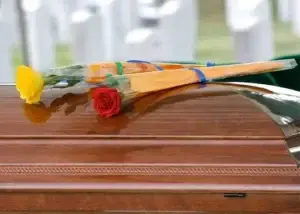A cremation urn is a vase with a thin neck used to preserve the ashes of a loved one following his or her cremation. Though many families use urns in Philadelphia to remember a beloved family member or friend after they pass away, few people realize that the history of the cremation urn dates back thousands of years.
Most historians agree that the concept of the cremation urn comes from China. The oldest discovered pottery urn dates back to 7000 BC. Historians uncovered 32 burial urns believed to be from the Jiahu archaeological site in China, a Neolithic settlement based along the Yellow River and one of the oldest preserved human cultures. Historians have noted that markings on these urns indicate that the majority of cremations were performed for children — though a few sporadic urns do exist for adults. Early urns varied widely in size and shape, and archeologists have uncovered more than 50 urn styles from China alone.
Historically significant urns have also been uncovered throughout Europe. The Urnfield Culture (a Bronze Age civilization that existed between the years 1300 BC to 750 BC) got its name after historians uncovered large cemeteries of urn burials. Ancient Greece also had a large number of cremations, and pottery urns were often painted to resemble a Greek vase. Cremations and urn burials were also common in early Anglo Saxon England and in many Pre-Columbian cultures.
Today, cremation presents an affordable and accessible way for families who have lost a loved one to remember their memory for years to come. Funeral companies like us pride ourselves on providing a range of end-of-life services, including cremations and assistance with hospice programs in Philadelphia. If you’ve recently lost a loved one, contact us at any time. We’re available 24 hours a day and 7 days a week to provide you with support and service as needed.




